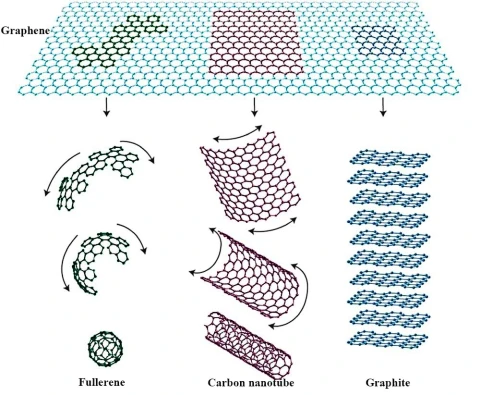Description
Laser Scribed Graphene (LSG) is an innovative material derived through the direct laser writing technique, which transforms the surface of precursor materials like graphite or polymers into graphene. This method leverages the precision and energy of lasers to create graphene’s unique lattice structure, known for exceptional electrical conductivity, flexibility, and mechanical strength.
Laser Scribed Graphene (LSG)
Alfa Chemistry
Specifications
| Size: | 1 cm^2 |
|---|---|
| Molar Mass: | 12 g/mol |
| Molecular Weight: | 12.011 g/mol |
| Boiling Point: | Very high (USCG, 1999); Sublimes (NIOSH, 2016); 4200 °C; Sublimes at 3642 °C; Triple point (graphite-liquid-gas), 4492 °C at a pressure of 101.325 kPa; >4000 °C |
| Appearance: | Black film |
Features
- Innovative Material: Laser Scribed Graphene (LSG) is produced through a direct laser writing technique, transforming precursor materials like graphite or polymers into graphene.
- Exceptional Properties: Known for its unique lattice structure, LSG offers exceptional electrical conductivity, flexibility, and mechanical strength.
- Fiber Integration: Embedding LSG within fibers enhances their mechanical, electrical, and thermal properties, offering exciting prospects in fiber production.
- High-Performance Composites: The synergy of LSG with fibers opens pathways to developing high-performance composite materials and smart textiles.
- Versatile Applications: The conductive and lightweight nature of graphene fibers makes them ideal for applications ranging from wearable electronics to advanced aerospace components.
- Frontier in Material Science: The fusion of LSG with fiber technology represents a cutting-edge advancement in material science, driving the evolution of next-generation functional materials.
Applications
- In the realm of fiber production, the integration of LSG offers exciting prospects. By embedding graphene within fibers, manufacturers can significantly enhance the mechanical, electrical, and thermal properties of these fibers.
- This synergy opens new pathways in developing high-performance composite materials and smart textiles, where the conductive and lightweight nature of graphene fibers can be utilized in applications ranging from wearable electronics to advanced aerospace components.
- The fusion of LSG with fiber technology represents a frontier in material science, driving the evolution of next-generation functional materials.
Frequently Asked Questions
What is Laser Scribed Graphene (LSG)?
Laser Scribed Graphene (LSG) is an innovative material derived through the direct laser writing technique, which transforms the surface of precursor materials like graphite or polymers into graphene. This method leverages the precision and energy of lasers to create graphene’s unique lattice structure, known for exceptional electrical conductivity, flexibility, and mechanical strength.
What is the CAS Number for Laser Scribed Graphene?
The CAS Number for Laser Scribed Graphene is 7440-44-0.
How is Laser Scribed Graphene produced?
Laser Scribed Graphene is produced through a direct laser writing technique that transforms the surface of precursor materials like graphite or polymers into graphene.
What are the key properties of Laser Scribed Graphene?
The key properties of Laser Scribed Graphene include exceptional electrical conductivity, flexibility, and mechanical strength.
What are the potential applications of Laser Scribed Graphene?
Potential applications of Laser Scribed Graphene include high-performance composite materials and smart textiles, where it can be used in wearable electronics and advanced aerospace components due to its conductive and lightweight nature.
How does Laser Scribed Graphene enhance fiber production?
By embedding graphene within fibers, manufacturers can significantly enhance the mechanical, electrical, and thermal properties of these fibers, opening new pathways in developing high-performance composite materials and smart textiles.
What is the role of Laser Scribed Graphene in material science?
The fusion of Laser Scribed Graphene with fiber technology represents a frontier in material science, driving the evolution of next-generation functional materials.
Thank You!
Your inquiry has been received.
Create an account by adding a password
Why create an account?
- Auto-complete inquiry forms
- View and manage all your past messages
- Save products to your favorites
- Close your account anytime — no hassle
